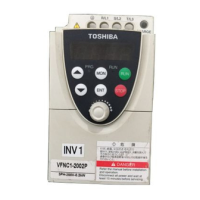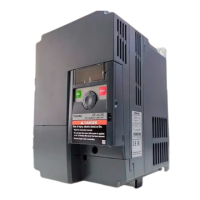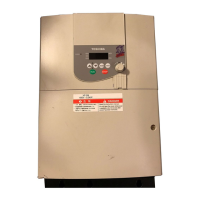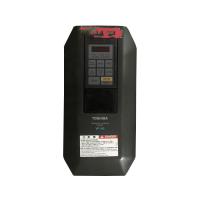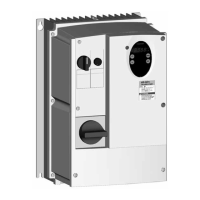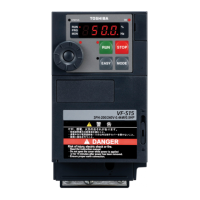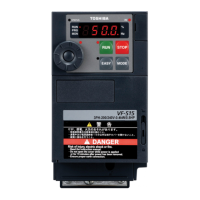E6581595
E-20
5
Motor constant must be set
If the motor you are using is a 4P Toshiba standard motor and if it has the same capacity as the inverter, there is
basically no need to set the motor constant. In any other case, set the following parameters according to the
motor's name plate.
(Base frequency 1), (Base frequency voltage 1), (Motor rated capacity), (Motor
rated current), (Motor rated speed)
There are three procedures for setting the other motor constants.
1) The sensorless vector control and motor constants (auto-tuning) can be set at a time.
Set the basic parameter to . ⇒ Refer to section 5.4-2) for details.
2) The motor constant can be automatically set (auto-tuning).
Set the extended parameter to . ⇒ Refer to section 6.14 selection 2 for details.
3) Each motor constant can be set individually. ⇒ Refer to section 6.14 selection 3 for details.
5) Energy-saving
Setting of V/F control mode selection to (Energy-saving)
Energy can be saved in all speed areas by detecting load current and flowing the optimum current that fits the
load.
Motor constant must be set
If the motor you are using is a 4P Toshiba standard motor and if it has the same capacity as the inverter, there is
no need to set the motor constant. In any other case, set the following parameters according to the motor’s
name plate.
(Base frequency 1), (Base frequency voltage 1), (Motor rated capacity), (Motor
rated current), (Motor rated speed)
There are three procedures for setting the other motor constants.
1) Automatic energy-saving operation and a motor constant can be set at once.
Set the basic parameter to . ⇒ Refer to section 5.4-3) for details.
2) The motor constant can be automatically set (auto-tuning).
Set the extended parameter to . ⇒ Refer to section 6.14 selection 2 for details.
3) Each motor constant can be set individually. ⇒ Refer to section 6.14 selection 3 for details.
6) Cautions for vector control
1) When performing vector control, look at the motor's name plate and set the following parameters.
(Base frequency 1), (Base frequency voltage 1), (Motor rated capacity), (Motor
rated current), (Motor rated speed)
2) The sensorless vector control exerts its characteristics effectively in frequency areas of the base frequency
(vl) or less. The same characteristics will not be obtained in areas over the base frequency.
3) Set the base frequency to anywhere from 40 to 120Hz during vector control (=).
4) Use a general purpose squirrel-cage motor with a capacity that is the same as the inverter's rated capacity or
one rank below.
The minimum applicable motor capacity is 0.05kW.

